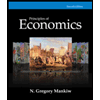2. Public Good and Contribution. Consider the following scheme for contributing to the provision of a public good, say the opening of a community library for a community of n families. Each family i decides a contribution gi towards a public good, which represents a number of books. The total quantity of public good is equal to G=g; is then the size of the library. Each family incurs an addition cost of y(g)²/2 for contributing g;, equivalent to the cost of transporting the books to the collection point. Therefore, the utility function of family i is (81)² (81)² U₁(gig)=G-y 81-1 2 (a' (b) (c) Consider the socially optimal solution. Define the social wel- fare V as the sum of the all the families' utility functions V = U(gj,g-;). Maximise V with respect to g, for i = 1,.,n. Using the first order condi- tions, determine the socially optimal level of contribution per family. gso.i for i=1,...,n and the socially optimal size of the library: Go How do you know that the solutions for gso.; are a maximum? (Hint: what conditions are needed for the solution of an optimisation to be a maximum) Consider now the simultaneous contribution to the public good by the families in the community. Find the Nash equilibrium in the con- tribution level, by having each family maximise their utility holding the contribution of others g, constant. What is the quantity contributed g;? (d) Compare the contributions in the Nash equilibrium to the so- cial optimum quantity go. What intuition can you use to explain the difference? In particular, compute the ratio g/gso How does this vary with the number of families n? In which communities is the problem of underprovision of public goods more serious?
2. Public Good and Contribution. Consider the following scheme for contributing to the provision of a public good, say the opening of a community library for a community of n families. Each family i decides a contribution gi towards a public good, which represents a number of books. The total quantity of public good is equal to G=g; is then the size of the library. Each family incurs an addition cost of y(g)²/2 for contributing g;, equivalent to the cost of transporting the books to the collection point. Therefore, the utility function of family i is (81)² (81)² U₁(gig)=G-y 81-1 2 (a' (b) (c) Consider the socially optimal solution. Define the social wel- fare V as the sum of the all the families' utility functions V = U(gj,g-;). Maximise V with respect to g, for i = 1,.,n. Using the first order condi- tions, determine the socially optimal level of contribution per family. gso.i for i=1,...,n and the socially optimal size of the library: Go How do you know that the solutions for gso.; are a maximum? (Hint: what conditions are needed for the solution of an optimisation to be a maximum) Consider now the simultaneous contribution to the public good by the families in the community. Find the Nash equilibrium in the con- tribution level, by having each family maximise their utility holding the contribution of others g, constant. What is the quantity contributed g;? (d) Compare the contributions in the Nash equilibrium to the so- cial optimum quantity go. What intuition can you use to explain the difference? In particular, compute the ratio g/gso How does this vary with the number of families n? In which communities is the problem of underprovision of public goods more serious?
Essentials of Economics (MindTap Course List)
8th Edition
ISBN:9781337091992
Author:N. Gregory Mankiw
Publisher:N. Gregory Mankiw
Chapter11: Public Goods And Common Resources
Section: Chapter Questions
Problem 10PA
Related questions
Question
PART D E F

Transcribed Image Text:2. Public Good and Contribution.
Consider the following scheme for
contributing to the provision of a public good, say the opening of a community
library for a community of n families. Each family i decides a contribution g;
towards a public good, which represents a number of books. The total quantity
of public good is equal to G =E8; is then the size of the library. Each family
incurs an addition cost of r(g,)*/2 for contributing g;, equivalent to the cost of
transporting the books to the collection point. Therefore, the utility function of
family i is
(g.)
U{81»8-1)= G-y-
2
j=1
(g.)
2
(a'
Consider the socially optimal solution. Define the social wel-
fare V as the sum of the all the families' utility functions V = E U,(8j,g=j).
Maximise V with respect to g, for i = 1,...,n. Using the first order condi-
tions, determine the socially optimal level of contribution per family. goi
for i = 1, ..,n and the socially optimal size of the library: Go
(b)
How do you know that the solutions for gio are a maximum?
(Hint: what conditions are needed for the solution of an optimisation to
be a maximum)
| Consider now the simultaneous contribution to the public good
(c)
by the families in the community. Find the Nash equilibrium in the con-
tribution level, by having each family maximise their utility holding the
contribution of others g*, constant. What is the quantity contributed g;?
(d) -
cial optimum quantity gšo What intuition can you use to explain the
difference? In particular, compute the ratio g/g3o How does this vary
with the number of families n? In which communities is the problem of
underprovision of public goods more serious?
Compare the contributions in the Nash equilibrium to the so-

Transcribed Image Text:(e, .
Assume now altruistic families that maximise
U,(gi,g-i)+a> U,(gj•g=j)
iti
That is, families put weight a> 0 on the utility of other families in the com-
munity. Recompute the Nash equilibrium g for the case of altruism. How
does this altruistic equilibrium quantity vary with a?
(f)
optimal level of contribution go and intend on doing so by influenc-
ing the altruism of the families, i.e. changing a. Suppose doing so incurs
no cost for the government. Compute the level of a that the government
Suppose now the government sets a target to attain the socially
should induce?
Comment on the economics in the previous part. Is altruism
beneficial? Is it better to live in a society with high or low a?
Expert Solution
This question has been solved!
Explore an expertly crafted, step-by-step solution for a thorough understanding of key concepts.
Step by step
Solved in 5 steps with 6 images

Knowledge Booster
Learn more about
Need a deep-dive on the concept behind this application? Look no further. Learn more about this topic, economics and related others by exploring similar questions and additional content below.Recommended textbooks for you

Essentials of Economics (MindTap Course List)
Economics
ISBN:
9781337091992
Author:
N. Gregory Mankiw
Publisher:
Cengage Learning

Principles of Economics, 7th Edition (MindTap Cou…
Economics
ISBN:
9781285165875
Author:
N. Gregory Mankiw
Publisher:
Cengage Learning

Principles of Economics (MindTap Course List)
Economics
ISBN:
9781305585126
Author:
N. Gregory Mankiw
Publisher:
Cengage Learning

Essentials of Economics (MindTap Course List)
Economics
ISBN:
9781337091992
Author:
N. Gregory Mankiw
Publisher:
Cengage Learning

Principles of Economics, 7th Edition (MindTap Cou…
Economics
ISBN:
9781285165875
Author:
N. Gregory Mankiw
Publisher:
Cengage Learning

Principles of Economics (MindTap Course List)
Economics
ISBN:
9781305585126
Author:
N. Gregory Mankiw
Publisher:
Cengage Learning

Principles of Microeconomics (MindTap Course List)
Economics
ISBN:
9781305971493
Author:
N. Gregory Mankiw
Publisher:
Cengage Learning

